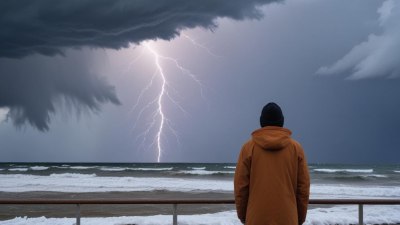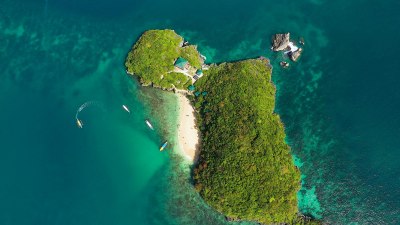The Silent War Between Tourists Who Love the Heat and Those Who Can’t Stand It
Explore the ongoing debate between heat-loving tourists and those seeking cooler climates.

Image by syda-productions on Freepik
Every summer, destinations worldwide become battlegrounds for two distinct types of travelers: those who thrive in the heat and those who actively avoid it. This silent war of preferences plays out in popular tourist spots, from sun-kissed beaches to shady retreats. Understanding these opposing sides requires delving into the psychology of why some tourists embrace the sweltering sun while others seek refuge from it.
The Heat Enthusiasts
The heat lovers are drawn to vibrant locales where the sun shines relentlessly. For them, the feel of the warm sun on their skin is not just a comfort but an invigorating experience. They thrive in locations like Miami, Cancun, and the Maldives, where temperatures soar high, and the activities are aplenty under the sun. Whether it’s lounging on the beach, partaking in water sports, or enjoying outdoor festivals, for these tourists, heat equals freedom and fun.
These enthusiasts often cite numerous benefits to spending their vacation in hot climates. The heat often means longer days filled with opportunities for exploration and adventure. Many outdoor events and festivals happen only during the summer months, showcasing local cultures and traditions that become vibrant during this season. Furthermore, the warm weather allows for greater interaction with nature, as tourists can partake in activities such as hiking, kayaking, and even nighttime beach parties.
A common refrain among heat lovers is the sense of relaxation that comes with warm weather. They often find that hot destinations provide a unique sense of calm, enabling them to disconnect from the stresses of daily life. The moral of their vacation story often revolves around soaking up the sun while letting the warmth melt away their worries. For tourists seeking to escape their hectic routines, experiencing the heat becomes a form of therapy.
The Cold Seekers
On the opposite side of this spectrum are the cold-seekers. For these travelers, even the slightest rise in temperature can be intolerable. They exhibit a preference for destinations where temperatures are milder or cool, seeking refuge from the oppressive heat waves that characterize summer months in many parts of the world. Locations such as the cool coastal towns of Maine or the lush, grassy hills of the European countryside serve as their sanctuaries.
The cold seekers prioritize comfort and ease when it comes to vacationing. Heat, for them, equates to sweating, discomfort, and even health risks. Many are reluctant to engage in outdoor activities when temperatures are soaring. Instead, they opt for cooler climates that allow them to explore without the exhausting heat weighing them down. They may prefer indoor activities, museum visits, and wine-tasting tours, where they can enjoy their surroundings without overheating.
Health considerations often play a significant role in why some tourists shy away from the heat. Older adults or those with certain health conditions, such as respiratory issues or heat sensitivity, tend to favor colder climates for their vacations. Even those who may not have health concerns often find themselves better able to enjoy activities such as hiking or sightseeing when it’s cool enough to comfortably engage in physical exertion.
Compromise Between Two Worlds
Understanding the battle between these two opposing groups requires acknowledging that many travelers are somewhere in between. Often, these tourists appreciate both climates but prefer to balance their experiences with varying temperatures throughout the year. A well-planned trip combining elements of warm and cool climates can ensure that everyone in a traveling party enjoys their vacation.
Travel agencies and tour operators have recognized this trend and adapted their offerings accordingly. Many design itineraries that allow for a mix of both hot and cool activities. For example, a trip may cover a sun-soaked beach on one day, followed by a refreshing mountain retreat on another. This approach enables tourists to experience the best of both worlds, accommodating the preferences of varying tastes.
Such hybrid vacation ideas appeal to families with diverse travel preferences. Kids may love the beach and enjoy building sandcastles under the sun, while parents may seek out tree-lined paths for leisurely hikes. As more families take vacations together, the need for flexible options becomes essential, allowing all members to enjoy their time away together.
Destination Specificity
Different destinations cater to the varying preferences, creating a unique atmosphere where both types of tourists attempt to coexist. Some locales effectively balance the heat and the cool by offering various activities tailored to each group. For example, beach towns attract sun-worshippers with their sun-filled days and vibrant nightlife, while offering shaded parks and indoor attractions for those seeking respite from the sun.
Major cities often serve as equators for this silent war. Urban destinations such as New York or Barcelona provide tourists with a blend of activities that appeal to both preferences. Visitors can explore museums and galleries to escape the heat before venturing out to parks and outdoor cafes when temperatures drop in the evening. This duality allows cities to thrive economically throughout the summer months while catering to the varied needs of different tourist demographics.
Economic Implications of Tourism Preferences
The impact of this ‘war’ between heat lovers and cold seekers extends beyond vacationing habits. The tourism industry strategically adjusts to incorporate elements of both preferences to drive its growth. The summertime allure of popular beach destinations is undeniable, generating substantial revenue for local economies. Conversely, cooler locales benefit from tourists seeking summer escape routes from the heat, keeping their seasons thriving.
Local businesses in both categories must respond to and adapt to these fleeting tourist trends. Beach resorts and seaside towns expand their offerings with additional services and amenities that cater to heat lovers, such as shaded lounges, water sports rentals, and sunset beach parties. In contrast, mountain lodges and rural retreats highlight their cool weather and outdoor activities, emphasizing themes of relaxation and exploration while avoiding summer’s oppressive heat.
Furthermore, as climate change exacerbates temperature fluctuations, these tourism preferences may continue to evolve. Hotter summers may lead cold seekers to become increasingly vocal about their vacation choices, driving more travelers toward cooler destinations. This evolving dynamic will create new marketing opportunities and require ongoing adjustments from tourism boards looking to sustain visitor engagement.
The dualities in tourist preferences reveal a landscape where heat-loving adventurers find joy in basking under the sun while those seeking cooler retreats discover their happiness in shaded parks or breezy hilltops. This silent war between the two opposing factions continues to shape not only their vacation experiences but also the economic landscape of the regions they visit. Ultimately, this ongoing battle underscores the necessity for destinations to adapt and cater to an increasingly diverse set of traveler needs. As tourism evolves, accommodating the likes of both heat enthusiasts and cold seekers may prove pivotal in shaping future vacation experiences, ensuring enjoyment across the board.











